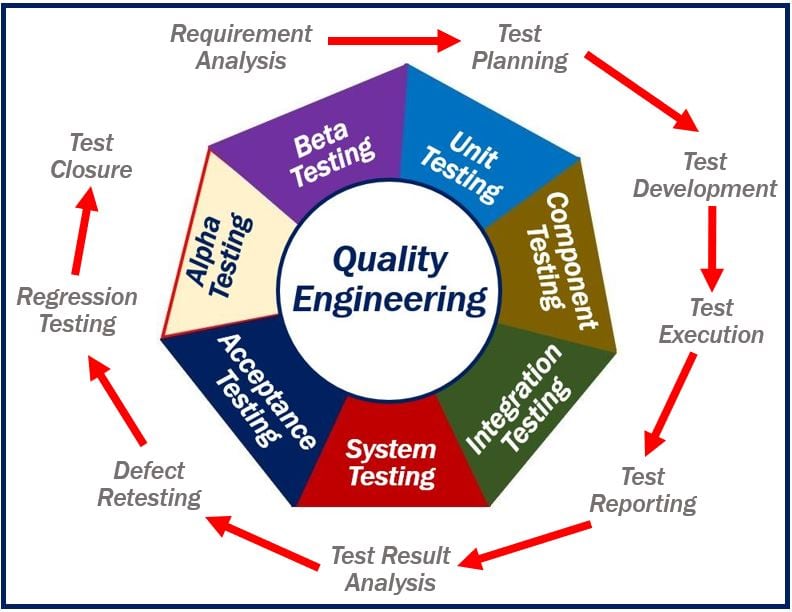Quality Engineering focuses on making sure that goods and services are designed, developed, and made to meet or exceed consumers’ expectations and requirements. Quality engineering also emphasizes predictive and preventative measures to preempt potential issues in product development.
It includes all the activities related to the analysis of a good’s design and development. Quality engineers also make sure that the manufacturer makes the goods according to specifications.
A quality engineer not only focuses on the product’s quality and the production process but also the reduction of waste.
Quality engineers design and monitor the quality of processes. They work in a variety of industries and play a vital role in correcting or fixing defects.
Definition of Engineering
Engineering is the application of scientific, mathematical, and practical knowledge to design, build, and maintain structures, machines, devices, systems, and processes.
Quality engineering vs. quality assurance
Quality assurance is the overall process of making sure that a manufacturer makes things properly. The manufacturer needs a quality system to make that happen.
Quality engineering, on the other hand, defines that system. It also maintains and improves it.
Quality assurance focuses on maintaining quality in the production process, while quality engineers ‘engineer’ it. In other words, quality engineers devise the system.
Some quality engineers not only devise the system but also monitor it. In other words, they do both quality engineering and quality assurance work. In the software industry, for example, people commonly call them quality assurance engineers.

Quality engineering and the ‘voice of the customer’
In today’s competitive marketplace, companies are forever developing new and improved products. Sometimes, they succeed in gaining market share, and sometimes they fail. In this context, the word ‘marketplace’ means the same as ‘market’ in the abstract sense of the word.
With the huge range of products on the market today, manufacturers must provide top-quality products that consumers want. They must also provide them at competitive prices.
Companies can make sure they take into account the ‘voice of the customer’ through the effective use of quality engineering methods and tools.
Quality engineering integrates customer feedback into product lifecycle management, ensuring continuous improvement and customer satisfaction.
